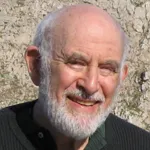Interested applicants to the Bio-X/Novo Nordisk Foundation Visiting Scholar or Postdoc Fellowship Program should check this page for an ongoing curated list of Bio-X affiliated faculty who have indicated willingness to host and mentor a fellow should he/she get selected for the program. Applicants can also review the entire list of Bio-X affiliated faculty to search for faculty of specific research fields.

Eric Appel - Assistant Professor of Materials Science & Engineering
Research projects of interest for fellowship program: The underlying theme of the Appel Lab at Stanford University integrates concepts and approaches from supramolecular chemistry, natural/synthetic materials, and biology. The lab aims to develop supramolecular biomaterials that take advantage of the beautiful synergism between physical properties, aesthetics, and low energy consumption typical of natural systems. The lab’s vision is to use these materials-based technological advancements as tools to better understand fundamental biological processes and to engineer advanced healthcare solutions.

Zhenan Bao - Professor of Chemical Engineering
Research projects of interest for fellowship program: The Bao Lab's work bridges chemistry, material science, electrical engineering with medical applications. Research will be carried out on developing stretchable electronic sensors and devices for wearable monitoring, cardiac electrophysiological mapping, nerve stimulation and recording.

Gill Bejerano - Associate Professor of Developmental Biology, of Computer Science, and of Pediatrics (Genetics)
Research projects of interest for fellowship program: Dr. Bejerano would be interested to discuss any research project that has a non trivial component of human genome and /or related data (like medical records) analysis. His lab has three main thrusts: 1. Automating patient diagnosis and related prediction tasks (such as referrals, treatments and trajectories). 2. Deriving actionable hypotheses from large scale omics data. 3. Studying the underlying genomics of amazing animal adaptations.

Rebecca Bernert – Assistant Professor, Psychiatry and Behavioral Sciences(Genetics)
Research projects of interest for fellowship program: Suicide represents a preventable public health problem and global disease burden, continuing to account for more than half (57%) of all violent deaths worldwide. The Bernert lab focuses on identifying novel therapeutic targets that may improve risk detection, reduce stigma, and guide treatment innovation in the prevention of suicide across the lifespan. The lab uses cognitive, biological, and behavioral testing paradigms, with an emphasis on transdiagnostic risk factors that may inform etiology. The visiting fellow will have opportunity to analyze existing datasets to identify biomarkers of risk and indications of efficacy with a focus on machine learning and technology innovation in suicide prevention. We are seeking applications from applicants in with an interest in clinical trials and a specialty and interest in data science and machine learning.

Vivek Bhalla - Assistant Professor of Medicine
Research projects of interest for fellowship program: The Bhalla laboratory explores the role of the kidney in diabetes and hypertension. More specifically, we are studying the role of the endothelium in diabetic kidney disease. We have found that differential susceptibility to kidney disease is related to expression of endothelial cell-specific molecule-1, Esm-1, a glomerular-enriched, secreted protein that regulates inflammation and the glomerular filtration barrier. Using over-expression and knockout approaches in mice, we have shown that Esm-1 alters glomerular infiltration and albuminuria. Further studies on the mechanisms of action are a current area of interest for the laboratory. Please contact Vivek Bhalla if interested.

Paul Bollyky - Assistant Professor of Medicine (Infectious Diseases)
Research projects of interest for fellowship program: The Bollyky lab at Stanford University investigates diabetes and diabetes-associated infections. We are an immunology lab and are interested in fundamental mechanisms of immune regulation and innate immunity. We welcome fellows interested in immunology, diabetes, and infectious diseases.

Eugene Butcher - Klaus Bensch Professor in Pathology
Research projects of interest for fellowship program: There are several projects available in the Butcher Lab: 1) Computational biology/single cell transcriptomics. Develop algorithms to probe cell subsets, interactions and communication in immune, vascular & tumor biology as part of a highly interactive multidisciplinary team. The fellow will apply bioinformatic tools and will develop new algorithms for analyses of large scale single cell transcriptomic datasets focused on cell specialization and communication in immune & tumor biology. 2) Study newly identified endothelial stem-like cells and their responses in immune and tumor angiogenesis as part of a multidisciplinary and highly interactive team. The fellow will apply in vivo (mouse models, genetic fate mapping, conditional mutants), in vitro (cell culture), and molecular (scRNAseq, mass cytometry) approaches to study tissue resident endothelial cell stem-like cells and their differentiation and specialization in immune and tumor angiogenesis. 3) Mucosal immunology. Study novel gut-targeted T cell populations and their role in postnatal maturation of the intestinal immune system. Define molecular mechanisms of intestinal T cell trafficking and their therapeutic potential in models of inflammatory bowel disease.

Jan Carette - Assistant Professor of Microbiology and Immunology
Research projects of interest for fellowship program: The Carette lab is interested in the host pathways that determine the susceptibility of humans to viral disease. Viruses constantly evolve to exploit host machineries for their benefit whilst disarming host restriction mechanisms. Discovery of host proteins critical for viral infection illuminates basic aspects of cellular biology, reveals intricate virus host relationships, and leads to potential targets for antiviral therapeutics.

James Chen - Professor of Chemical & Systems Biology, Developmental Biology
Research projects of interest for fellowship program: The Chen laboratory uses chemical tools to study developmental and cancer biology. We apply small molecules, synthetic oligonucleotides, and optogenetic probes in both cellular and animal models, and our studies currently focus on mesoderm patterning, spermiogenesis, colorectal cancer, and neuroblastoma. Applicants with expertise in synthetic chemistry, molecular biology, cell biology, and/or animal models are encouraged to contact James Chen to discuss possible postdoctoral projects in more detail.

Thomas Cherpes - Assistant Professor of Comparative Medicine
Research projects of interest for fellowship program: There are an estimated 200 million cases of malaria each year. Developing a prophylactic malaria vaccine is needed to reduce global burden of this disease. Recent experimental and clinical studies indicate vaccination with attenuated whole sporozoites boosts host protection by increasing the number of liver-resident malaria-specific CD8+ T cells. A visiting scholar or postdoc would explore using animal models to guide development of a novel liver-stage malaria vaccine.

Frederick Chin - Assistant Professor (Research) of Radiology (Diagnostic Radiology)
Research projects of interest for fellowship program: The Chin lab is looking for a fellow (e.g. chemist/radiochemist/biologist) who would like to focus on using PET/MR neuroimaging to understand and treat the disease. Our research areas of interest include developing new strategies for: 1) novel radioligand and radiotracer development for various targets involved in brain and cancer biology, 2) radiolabeling methods of molecules/peptides/antibodies, and 3) clinical translation of useful radiopharmaceuticals for early-detection of disease and monitoring therapy. Current funded projects in my group study Alzheimer’s disease (tau, SV2A), autism (GABA-A), fragile X syndrome (GABA-A, sigma-1), obsessive compulsive disorder (sigma-1), pain (sigma-1), schizophrenia (SV2A), and tumor microenvironment (CSF-1). We continue to develop novel tracers for positron emission tomography and have translated over 35 radiolabeled compounds for clinical imaging in our Molecular Imaging Program at Stanford.

Karlene Cimprich - Professor of Chemical and Systems Biology
Research projects of interest for fellowship program: Genomic instability contributes to many diseases, such as cancer, neurodegenerative disease, and developmental disorders, but it also underlies many natural processes including aging, evolution, and antibody diversification. The Cimprich lab is focused on understanding the mechanisms that the cell uses to maintain genomic stability, with an emphasis on the DNA damage and replication stress response. The genome is particularly vulnerable during DNA replication because the replisome stalls at many DNA lesions, transcription complexes and other types of barriers, such as secondary DNA structures. Stalled replication forks are unstable and can be processed in aberrant ways, leading to chromosomal rearrangements. We use a variety of techniques and systems (e.g. mammalian cells, Xenopus extracts) to understand how the DNA damage response is initiated, how this pathway is integrated with the processes of DNA replication and transcription, and how cells recover from DNA damage. Please see the site for further details.

Markus Covert - Associate Professor of Bioengineering
Research projects of interest for fellowship program: The Covert Lab develops novel experimental, computational and mathematical technologies with the overall goal of creating dynamic and predictive simulations of cellular behavior. The lab is probably best known for constructing the first "whole-cell" computational model, which explicitly represents all known gene functions and molecules in a bacterial cell - an advance which was recently highlighted by the journal Cell as a highlight publication of the 40-year history of that journal. Whole-cell modeling remains an active effort in the lab; further ongoing work has led to several other "firsts", including: the creation of novel fluorescent reporters of kinase activity in single cells, deep learning approaches to dramatically accelerate image analysis for live-cell microscopy, and the simultaneous measurement of transcription factor activity and global transcriptome in the same individual cell.

Gerald Crabtree - Professor of Pathology in Experimental Biology and of Development Biology
Research projects of interest for fellowship program: The Crabtree laboratory is interested in the role of chromatin or epigenetic regulation in development and cancer. The lab focuses on the ATP-dependent chromatin modifying complexes that are frequently mutated in human disease. Indeed, recent genomic studies have shown that the subunits of the ATP-dependent chromatin regulator, BAF or mSWI/SNF contribute to over 20% of all human malignancies. The neural specific nBAF complex subunits are the most commonly mutated genes in human neurodevelopmental disorders. The lab is striving to understand the fundamental mechanisms used by these complexes to suppress the development of human cancer and their role in the development of the human nervous system.

Rhiju Das - Associate Professor of Biochemistry
Research projects of interest for fellowship program: Research projects include: statistical physics of RNA structure/function in vivo; high-throughput cryoelectron microscopy of RNA molecules and their complexes; design of ultra-tight RNA aptamers for proteins and other therapeutic targets.

Reinhold Dauskardt - Ruth G. and William K. Bowes Professor in the School of Engineering and Professor of Materials Science & Engineering
Research projects of interest for fellowship program: Barrier Function, Biomechanical Properties and Perception of Human Skin – The Dauskardt Lab’s research on the barrier function and biomechanical properties of human skin has helped establish a new biophysics and biomechanical framework for understanding the function of human skin, its “feel,” firmness and appearance. The lab has demonstrated how barrier and biomechanical properties play a central role in skin aging, damage processes following harmful exposures including solar UV radiation and have also elucidated the efficacy of a wide range of topical (moisturizing) treatments and how they are “perceived” by consumers. The focus of the lab’s future programs will be to build on these studies to 1) demonstrate how specific molecules in formulations can be quantitatively characterized, modeled and predicted, 2) examine the critical importance of synergistic effects of multiple environmental stressors including combinations like UV plus environmental pollutants on damage processes and resulting barrier and biomechanical properties of human SC, and finally 3) linking these effects to human perception of their skin.

Mark Davis - The Burt and Marion Avery Family Professor and Professor of Microbiology & Immunology
Research projects of interest for fellowship program: The Davis lab is interested in T-cell recognition, particularly as it relates to autoimmune diseases, and namely what are the causative antigens that drive specific diseases and what are their functions. We and our collaborators, particularly Prof. Chris Garcia here at Stanford, have developed a whole suite of novel methods that allow us to go from minute numbers of T-cells from patient material to the sequences of their T-cell receptors, finding common specificities shared by patients and identification of their peptide-MHC specificities and functional attributes. These efforts promise to revolutionize our understanding of autoimmune diseases and could lead to novel treatments.

Vinicio de Jesus Perez - Assistant Professor of Medicine (Pulmonary & Critical Care Medicine)
Research projects of interest for fellowship program: The De Jesus Perez Lab focuses on understanding the genetic, cellular and molecular mechanisms involved in the pathogenesis of pulmonary arterial hypertension (PAH). The lab is interested in understanding how pulmonary arteries respond to injury and identify novel genetic modifiers whose dysfunction can trigger small vessel loss and vascular remodeling in PAH patients. In particular, the lab is currently focused on exploring how the Wnt signaling pathways regulate the behavior of pulmonary artery endothelial cells (PAECs), smooth muscle cells (PASMCs) and pericytes in response to injury and whether mutations related to these pathways can affect signaling via other pathways relevant to PAH resulting in development of clinical disease. The overarching goal of the lab’s work is to identify potential biomarkers and drug targets that can be used in the development of novel diagnostic and treatment approaches to offer patients afflicted with this devastating disease.

Utkan Demirci - Professor of Radiology
Research projects of interest for fellowship program: The Demirci Lab is interested in hosting fellows working on the following projects: Project 1 - ExoHeart: Elucidating the Mechanisms of Metabolic Cardiomyopathy through Personalized Exosome Profiling; Project 2 - Novel disposable microchips for virus load and biomarker detection in saliva and blood; Project 3 - Sorting Rare cells in cancer using magnetic levitation. Please contact Dr. Demirci for more information.

Jun Ding - Assistant Professor of Neurosurgery and of Neurology
Research projects of interest for fellowship program: The Ding lab studies the neural mechanisms underlying fine movement control and motor learning. In addition, we are studying how dysfunction of motor circuits leads to movement disorders, such as Parkinson's disease. Our lab uses electrophysiology, 2-photon microscopy, optogenetics and genetic tools to dissect the functional organization of motor circuits, particularly cortico-thalamo-basal ganglia networks. The long-term scientific goal of the lab is to construct functional circuit diagrams and establish causal relationships between activity in specific groups of neurons, circuit function, animal motor behavior and motor learning, and thereby to decipher how the basal ganglia process information and guide motor behavior.

Ron Dror - Associate Professor of Computer Science
Research projects of interest for fellowship program: The Dror lab's research focuses on computational structural biology, but the lab is a highly multidisciplinary one whose work spans fields ranging from high-performance computing, computer vision, and machine learning to biochemistry, cell biology, and drug discovery. The lab studies the spatial organization and dynamics of biomolecules and cells in order to develop better medicines and quantitatively explain the workings of living systems. Areas of interest range include molecular dynamics simulations, G-protein-coupled-receptor (GPCR) signaling, protein-protein and protein-drug interactions, and cryoelectron microscopy. Everyone collaborates closely with a wide variety of world-class experimentalists. For more research information, please check out the lab here.

Laramie Duncan - Assistant Professor of Psychiatry & Behavioral Sciences
Research projects of interest for fellowship program: The Duncan Lab / Integrative Mental Health Lab identifies genetic risk factors for mental health conditions, like schizophrenia and PTSD. Our broader goal is to use genetic findings to identify the neurobiological mechanisms contributing to psychiatric disorders. We currently use large-scale genomic (variation) datasets and computational approaches, and we are increasingly using RNA sequencing data from single cells/single nuclei to identify the precise brain cell types relevant to psychiatric disorders. Other projects in the lab examine sex differences in psychiatric disorders and the problem of low ancestral diversity in many genetic studies.

Daniel Ennis - Professor of Radiology
Research projects of interest for fellowship program: The Cardiac Magnetic Resonance (CMR) Group led by Dr. Ennis develops advanced MRI techniques to improve clinical care with a focus on cardiac and cardiovascular applications. More specifically our research focuses on Heart Failure, Duchenne Muscular Dystrophy, Flow and Motion, Diffusion and Perfusion, Gradient Waveform Design, and MRI Safety. We aim to both increase the quantitative accuracy and reduce the image acquisition times for cardiac and cardiovascular MRI exams.

James Ferrell - Professor of Chemical & Systems Biology, Biochemistry
Research projects of interest for fellowship program: The Ferrell lab combines quantitative experimentation with modeling and theory with the aim of understanding recurring themes in signal transduction. Current projects include several that examine the spread of signals via trigger waves, self-sustaining fronts of biochemical activity that arise out of systems with positive feedback.

K. Christopher Garcia - Younger Family Professor and Professor of Structural Biology
Research projects of interest for fellowship program: The Garcia laboratory is broadly interested in cell surface receptors and their ligands. Our principal goal is to exploit mechanistic and structural information on receptor-ligand interactions to interrogate and therapeutically impact human disease. We ask how ligand recognition and signaling coordinate with the physiology of the cell using protein engineering to manipulate signaling pathways in order to control cell function and fate. The receptor systems we study play key roles in immunology, stem cell and neurobiology, and have translational relevance to immunotherapy and regenerative medicine.

Andrew Gentles - Assistant Professor of Medicine (BMIR)
Research projects of interest for fellowship program: The Gentles lab works in biomedical data science, particularly computational systems biology approaches that integrate different types of genomic and proteomic data to phenotypes and clinical outcomes. Most of our work is in cancer, but we also have a growing interest in infectious disease and in neurodegenerative diseases such as Alzheimers. A unifying concept is the role of the immune system in disease progression and outcomes.

Paul George - Assistant Professor of Neurology and Neurological Sciences
Research projects of interest for fellowship program: The George lab applies bioengineering approaches to promote neural recovery. Through the use of biomaterials, microfabrication techniques, and stem cell therapeutics, we are able to manipulate the neural environment and determine important pathways for healing. Our goal is to use these pathways to develop new treatments for patients with stroke and other neurological diseases. A Visiting Scholar or Postdoc would work on a project utilizing our conductive biomaterials to develop new methods of stem cell delivery to promote neural recovery. Please don't hesitate to contact Dr. George with any questions.

Olivier Gevaert - Assistant Professor of Medicine (Biomedical Informatics Research)
Research projects of interest for fellowship program: The Gevaert lab focuses on multi scale biomedical data fusion focusing on applications in oncology. The lab offers projects involving modeling data at molecular, cellular and tissue levels using a wide range of different technologies such as sequencing (DNA, RNA) and imaging (e.g. MRI, CT, PET). More specifically, the lab has active research lines to develop computational approaches to find relevant patterns in these high dimensional, multi-modal data sets. These machine-learning methods combine elements from statistics, mathematics and apply them on multi-scale data ranging from molecular biology, pathology to radiology. The Gevaert lab has made key contributions in the field of imaging genomics/radiogenomics involving work in lung cancer and brain tumors and is now studying Alzheimer's disease.

Jeffrey Glenn - Professor of Medicine and Microbiology & Immunology
Research projects of interest for fellowship program: In the Glenn lab we seek to develop novel types of antiviral strategies for the clinic, as well as engineered human liver tissues. Potential projects can include: 1) Development of a universal therapeutic against influenza (RNA biology and virology) 2) Potent small molecule inhibitors of enteroviruses to treat acute flaccid paralysis and rhinovirus-induced asthma (medicinal chemistry and virology) 3) Rescuing hepatic failure with 3D-printed engineered human liver tissues (engineering and transplantation)

Stuart Goodman - Robert L. and Mary Ellenburg Professor in Surgery
Research projects of interest for fellowship program: Whether bone loss is due to trauma, wear debris from implants, infection, arthritis or other causes, understanding the relevant and fundamental inflammatory processes associated with implants and bone loss, and restoring lost bone by tissue engineering methods are main concentration areas of our laboratory. The Goodman lab has a NIH-funded "joint-on-a-chip" program with other universities that assess cutting-edge interventions for treating human joint diseases using high throughput technologies. Our interdisciplinary group of orthopaedic surgeons, veterinarians, bioengineers, cell and molecular biologists, radiologists and researchers specializing in advanced imaging techniques, pathologists, biostatisticians and others have the necessary experience and resources to pursue our research goals in a broad based, collaborative manner. Specific work include research on biomaterial associated inflammation, bone regeneration, and osteoneocrosis.

Nicolas Grillet - Assistant Professor of Otolaryngology
Research projects of interest for fellowship program: The Grillet Lab's research focuses in understanding a new molecular pathway involved in sound detection by the sensory cells of the inner ear and causing deafness when affected. The lab utilizes various approches ranging from Molecular Biology, generation of CRISPR/Cas9 mouse mutant, calcium imaging, biochemistry, Transmission and Scanning Electronic Microscopy and electrophysiology. The projects proposed will be part of this large endeavor to identify interactors and mechanisms involved in this new mechanotransduction mechanism. For more information, check out here.

Eric Gross - Assistant Professor of Anesthesiology Perioperative and Pain Medicine
Research projects of interest for fellowship program: The Gross laboratory is studying the effects of aldehydes on human health with a basic science focus. One aspect of the lab is studying the effects of aldehydes in relation to anesthesia and surgery in order to develop precision medicine strategies to improve care for the ~40 million people who undergo surgery requiring anesthesia each year in the US. The other aspect of the lab is studying the cardiopulmonary effects of e-cigarettes and in particular the aldehydes present in e-cigarettes using both cellular and rodent models.

Sarah Heilshorn - Associate Professor of Materials Science & Engineering
Research projects of interest for fellowship program: The Heilshorn lab develops new biomaterials to: create biomimetic culture platforms for human organ-typic cultures (e.g. organoids), develop tissue engineering scaffolds to promote healing, design injectable methods to deliver cell and drug therapies for regenerative medicine, study peptide and protein self-assembly into biomimetic structures, and develop platforms for biomanufacturing of cell-based therapies.

Guosong Hong - Assistant Professor of Materials Science & Engineering
Research projects of interest for fellowship program: The Hong Lab's research aims to bridge materials science and neuroscience and blur the distinction between the living and non-living worlds by developing new neuroengineering tools to interrogate and manipulate the brain in a minimally invasive way. Central to the lab’s research is the development of novel photonic and electronic materials that respond to and/or modulate neural activity with deep tissue penetration and minimal damage to the neural tissue. In particular, one main direction is to capitalize on unexplored sub-windows of the electromagnetic spectrum with reduced scattering and improved penetration in the brain tissue to achieve free-space neural signal transduction via a non-invasive brain-machine interface (Nature Medicine 2012; Nature Photonics 2014; Nature Biomedical Engineering 2017). Another main direction of the lab’s research is to develop a new form of nanobioelectronics that approaches the size limit of single neurons and sub-neuronal organelle structures for an intimate neuron-electronics interface with chronic stability (Nature Methods 2016; Science 2018).

Haruka Itakura - Assistant Professor of Medicine (Oncology)
Research projects of interest for fellowship program: The Itakura Lab is looking for a highly creative and motivated researcher to conduct applied research in the areas of machine learning and pattern/feature detection with a focus on computer vision/image processing and analysis orgenomic/molecular data processing and analysis. The objective for this research is to develop and apply computational frameworks for the integrative analysis of multi-omic biomedical data to accelerate discoveries in cancer diagnostics and therapeutics. The Itakura lab focuses on implementing machine learning frameworks and radiogenomic approaches on heterogeneous, multi-scale cancer data (e.g., clinical, imaging, histopathologic, genomic, transcriptomic, epigenomic, proteomic). Projects include prediction modeling of survival and treatment responses, biomarker (feature) discovery, cancer subtype discovery, and identification of new therapeutic targets. Guided by critical and relevant problems in oncology, these projects will have the potential to lead to clinically actionable or translatable findings.

Stefanie Jeffrey - John and Marva Warnock Professor and Professor of Surgery
Research projects of interest for fellowship program: The Jeffrey Lab investigates circulating tumor cells (CTCs) and other liquid biopsy components in blood to guide cancer therapy. We use patient-derived tumor cells grown in vitro (3D culture) and in vivo (patient-derived xenograft models that shed CTCs and metastasize) for drug testing studies and to investigate effects of immune cell/cancer cell interactions on drug response. We apply microfluidic, single cell, and advanced imaging technologies to this work.

Shamit Kachru - Professor of Physics and Director of the Stanford Institute for Theoretical Physics
Research projects of interest for fellowship program: The Kachru Lab is interested in theoretical questions in evolutionary biology and ecology. We incorporate ideas and techniques from theoretical physics into the investigation of these problems. Current work focuses on questions related to trade-offs in evolution and modularity of the genome; models of the co-evolution of epistatic interactions between genes and the structure of inheritance; and mathematical models of eco-evolutionary dynamics addressing a range of questions in ecology and evolution.

Joshua Knowles - Assistant Professor of Medicine (Cardiovascular Medicine)
Research projects of interest for fellowship program: A major focus of Dr. Knowles' research has been to elucidate the genetic basis of insulin resistance (IR), which is a necessary but not sufficient precursor for T2D and major cardiovascular risk factor. Therapeutic options for IR are very limited and there is an urgent need to identify new targets. Dr. Knowles helped to lead an international effort to uncover IR susceptibility loci through the GENESIS (GENEticS of Insulin Sensitivity) project (Knowles et al., JCI, 2015; Chennamsetty et al. Cell Reports. 2016) and the lab is currently performing functional characterization on two IR genes. Dr. Knowles havsalso helped to lead an NIH-funded U01 effort to use iPSC technology to study IR. The lab created induced pluripotent stem cell (iPSC) lines on ~200 individuals recruited for the scientific community to use as model systems for the study of IR and other conditions (Carcamo-Orive et al. Cell Stem Cell. 2017). These iPSC lines are being differentiated into tissues relevant to the pathology of IR (adipose, skeletal muscle and endothelial cells) and we have begun to map the key regulatory networks for IR and correlate this with the underlying genetic background of the individuals. Finally, the Knowles Lab is working on a daily basis with data from the UK Biobank exploring the associations of IR with multiple other phenotypes especially NAFLD.

Theodore Leng - Assistant Professor of Ophthalmology
Research projects of interest for fellowship program: Epiretinal membranes (ERMs) are transparent films that can grow over the surface of the retina, the nerve tissue that lines the back of the eye. Unfortunately, this film can affect central vision by pulling on and distorting the retina in up to 1/3 of healthy adults. This study will involve the examination of vitreous and ERMs removed from patients during surgery. The project will compare vitreous between those with and without ERMs. Micro-RNAs are tiny molecules that are unable to act as blueprints for proteins, but instead guide a process that inhibits the translation of protein coding regions of DNA, and ultimately alters the formation of specific proteins. Micro-RNAs are thought to stimulate and inhibit the production of proteins that allow Muller glia to contract and form ERMs. By comparing the micro-RNAs present in the vitreous of patients with and without ERMs, and by looking directly at ERM samples, we hope to identify specific micro-RNAs associated with the development of ERM. Once identified, we will investigate their effect on Muller glia cells to see if we can influence the development of contractile properties. Lastly, we will use this information to test methods to prevent cells from developing contractile properties by blocking the factors of interest.

Craig Levin - Professor of Radiology
Research projects of interest for fellowship program: - Design and development of novel imaging instrumentation, algorithms, and methods to non-invasively interrogate, visualize, and quantify the molecular signatures of disease. - Introducing these new tools and technologies into pre-clinical (i.e. small animal) and clinical research.

Jin Billy Li - Assistant Professor of Genetics
Research projects of interest for fellowship program: The Li lab is interested in translating our basic research on ADAR-mediated RNA editing. One aspect is to manipulate the dsRNA sensing pathway in cancer, autoimmune diseases and viral infections, based on our recent finding that RNA editing of endogenous dsRNA by ADAR suppresses MDA5-mediated innate immunity. The other aspect is to harness the endogenous ADAR for transcriptome engineering in mammals, avoiding the unwanted side effects in the CRISPR/Cas system that introduces a bacterial enzyme. The Li lab has established feasibility for both projects, and plans to move towards therapeutic applications.

Jonathan Long - Assistant Professor of Pathology
Research projects of interest for fellowship program: The Long laboratory is interested in understanding the biochemical control of mammalian metabolism and physiology. Towards this goal, the lab uses a unique and multidisciplinary approach combining synthetic chemistry, biochemistry, mass spectrometry, and genetics to discover new bioactive metabolite signaling pathways. In recent years, the lab has identified a circulating PM20D1/N-acyl amino acid pathway in blood that controls mitochondrial function and metabolic homeostasis. In the long term, Dr. Long hopes to translate these discoveries into therapeutic opportunities in cardiometabolic disease.

Merritt Maduke - Professor of Molecular and Cellular Physiology
Research projects of interest for fellowship program: Research projects available in the Maduke laboratory: 1) Structure and conformational dynamics of membrane transporter proteins 2) Designing, characterizing, and using small-molecule ligands to study chloride-channel function in the central nervous system 3) Molecular and cellular mechanisms of ultrasonic neuromodulation

Holden Maecker - Professor (Research) of Microbiology and Immunology
Research projects of interest for fellowship program: Dr. Maecker’s lab works broadly in the field of human immune monitoring, using highly multiplexed assay technologies such as CyTOF, Luminex, and single-cell genomics platforms. Projects of interest include characterizing what defines “immune competence” in settings such as organ transplantation and cancer immunotherapy. The lab also has a particular interest in the effect of cytomegalovirus on the immune system, and how this may affect other contemporaneous immune responses such as anti-tumor responses.

Sanjay Malhotra - Associate Professor (Research) of Radiation Oncology
Research projects of interest for fellowship program: As a medicinal chemist, chemical biologist, one of my research focuses is to understand the challenges of resistance to the current chemo- and radiation therapy, and develop new technologies/drugs/therapy to overcome these hurdles. Our studies in past decade has successfully identified protein(s) implicated in causing resistance to drug & radiation treatment in various solid tumors. These findings have lead to design of novel small molecule inhibitors, which can restore treatment sensitivity. My laboratory employs the tools of synthetic medicinal chemistry, molecular modeling and chemical biology for translational research in drug discovery, development, imaging and radiation.

Jennifer McNab - Assistant Professor (Research) of Radiology (Diagnostic Radiology)
Research projects of interest for fellowship program: Contact Dr. McNab if you are interested in developing magnetic resonance imaging (MRI) techniques that probe human brain tissue microstructure for improved neuronavigation, neurosurgical planning and tracking of brain development, degeneration, disease and injury. This includes developing new MRI contrast mechanisms, strategic encoding and reconstruction schemes, brain tissue modeling and validation. Current projects include: Probing Brain Tissue Microstructure, Mapping Cortical Fiber Patterns, Comparing MRI with Advanced Histology, Mixed-Reality Neuronavigation for TMS, Diffusion Tractography-based Neurosurgical Targeting.

Julia Palacios - Assistant Professor of Statistics and of Biomedical Data Science
Research projects of interest for fellowship program: Statistical modeling of cancer evolution. The development of cancer within an individual is fundamentally an evolutionary spatio-temporal process. Yet various characteristics of this process that give rise to the observed intratumor heterogeneity and the spatial distribution of cancer clones are poorly understood. The aim of this project is to develop a quantitative framework for formally testing different evolutionary models of cancer.

Daniel Palanker - Professor of Ophthalmology
Research projects of interest for fellowship program: Retinal degenerative diseases lead to blindness due to loss of the “image capturing” photoreceptors, while neurons in the “image-processing” inner retinal layers are relatively well preserved. Information can be reintroduced into the visual system using electrical stimulation of the surviving inner retinal neurons. We developed a photovoltaic subretinal prosthesis which converts light into pulsed electric current, stimulating the nearby inner retinal neurons. Results of the clinical trial with our implants (PRIMA, Pixium Vision) having 100mm pixels, as well as preclinical measurements with 75 and 55mm pixels, confirm that spatial resolution of prosthetic vision can reach the sampling density limit. For a broad acceptance of this technology by patients who lost central vision due to age-related macular degeneration, visual acuity should exceed 20/100, which requires pixels smaller than 25mm. We are working on 3-dimensional electro-neural interfaces which should enable such a high spatial resolution and evaluate their performance in animal models of retinal degeneration.

Suzanne Pfeffer - Emma Pfeiffer Merner Professor in the Medical Sciences and Biochemistry
Research projects of interest for fellowship program: The Pfeffer lab studyies the molecular basis of Parkinson’s disease. Parkinson’s disease-associated LRRK2 kinase phosphorylates multiple Rab GTPases and we have shown that LRRK2 kinase interferes with primary cilia formation (DOI: https://doi.org/10.7554/eLife.40202.001). Rab10 phosphorylation blocks ciliogenesis by enhancing its binding to RILPL1. Pathogenic LRRK2 influences the ability of cells to respond to cilia-dependent, Hedgehog signaling. Moreover, cholinergic neurons in the striatum of LRRK2 mutant mice show decreased ciliation, which will decrease their ability to sense Sonic hedgehog in a neuro-protective circuit that supports dopaminergic neurons. These data reveal a molecular pathway for regulating cilia function that likely contributes to Parkinson’s disease-specific pathology, and projects are available to study this circuit in mutant mouse brains and cultured iPS cells.

David Prince - Edward F. and Irene Thiele Pimley Professor in Neurology and Neurological Sciences
Research projects of interest for fellowship program: Work in the Prince lab has focused on normal and abnormal regulation of excitability in neurons of mammalian cerebral cortex and thalamus, and mechanisms underlying development and prophylaxis of epilepsy in animal models. Techniques used include whole cell recordings, chronic EEG recordings, immunocytochemistry, circuit mapping, Western blotting etc. Long-term goals are to understand how pathological processes following traumatic brain injury, prolonged seizures and genetic mutations induce changes in structure and function of neurons and neuronal networks that lead to hyperexcitability and epileptogenesis. The Prince Lab has provided proof in principal that prevention of epilepsy is possible in genetic and posttraumatic rodent models. With this information, it will be possible to devise experimental strategies that prevent epilepsy after cortical injury and other acquired and genetic abnormalities in man.

Tom Rando - Professor of Neurology & Neurological Sciences
Research projects of interest for fellowship program: The Rando lab focuses on the basic biology of stem cell function with interdisciplinary research with the fields of regenerative medicine and bioengineering. Our regenerative medicine studies focus on age-related declines in stem cell function and how to enhance stem cell functionality in order to improve tissue homeostasis and repair in aging tissues. Our bioengineering focus is on the use of stem cell transplantation in conjunction with advances in materials science in order to foster stem cell engraftment and transplantation efficacy by developing optimal scaffolds for stem cell survival, growth, and differentiation. Overall, our research extends from basic molecular analyses to preclinical translation, focusing on studies using both mouse and human cells, and creating a bench-to-bedside pipeline for stem cell biology and therapeutics.

Jennifer Raymond - Professor of Neurobiology
Research projects of interest for fellowship program: The goal of the Raymond Lab's research is to understand the algorithms the brain uses to learn. What are the learning rules that determine whether a neural circuit changes in response to a given experience, and which specific neurons or synapses are altered? We are addressing this question by integrating systems neuroscience approaches for analyzing neural circuits, including electrophysiological, behavioral, and computational techniques, with molecular-genetic tools for precisely manipulating specific neurons or synapses in vivo.

Rajat Rohatgi - Associate Professor of Biochemistry and Medicine (Oncology)
Research projects of interest for fellowship program: The Rohatgi lab works to uncover new regulatory mechanisms in cell-cell communication (or signaling) systems, to understand how these systems are damaged in diseases and to devise new strategies to repair their function. The first area of focus includes the Hedgehog and WNT pathways, two cell-cell communication systems that regulate the formation of most tissues during development and also play key roles in adult stem cell function and regenerative responses. A second area of focus is on signal transduction at the primary cilium, hair-like projections found on most cells in our bodies that function as critical hubs for signaling, and on the large number of human diseases linked to primary cilia. Finally, the lab works on the formation of reversible, membrane-less compartments in cells by the segregation of proteins into liquid phases, hydrogels or amyloid-like assemblies, an emerging principle of cellular organization, with broad implications for areas that include signaling at the cell surface, stress response pathways, and neuro-degeneration.

Daniel Rubin - Associate Professor of Radiology, Medicine, and Biomedical Data Science
Research projects of interest for fellowship program: The Laboratory of Quantitative Imaging and Artificial Intelligence (QIAI) led by Dr. Daniel Rubin in the Department of Biomedical Data Science, Radiology, and Medicine at Stanford University focuses on cutting‐edge research at the intersection of imaging science and biomedical informatics, developing and applying AI methods to large amounts of medical data for biomedical discovery, precision medicine, and precision health (early detection and prediction of future disease). Current research areas in the laboratory include: (1) automated image annotation using unsupervised methods of processing associated clinical reports using word embeddings and related methods; (2) developing methods of analyzing longitudinal medical and image data to predict clinical outcomes and best treatments, (3) creating multi-modal deep learning models integrating multi-dimensional data to discover electronic phenotypes of disease, (4) developing AI models with noisy or sparse labels (weak supervision), and cross-modal, multi-task learning, and observational AI approaches, (5) creating multi-modal deep learning models integrating multi-dimensional data (e.g., imaging and molecular data) to discover imaging signatures of disease and its response to treatment, and (6) developing and implementing algorithms for distributed computation for training deep learning models that leverage multi-institutional data while avoiding the barriers to data sharing.

Julia Salzman - Assistant Professor of Biochemistry and of Biomedical Data Science
Research projects of interest for fellowship program: The Salzman lab integrates statistical and experimental approaches in genetics to understand how RNA processing such as splicing and RNA isoform expression is regulated and functions. Projects in the lab include studying how RNA isoform expression and disease-specific RNA expression functions gives rise to multicellular phenotypes and is dysregulated in diseases such as in cancer. We also develop new technology for efficient, compressive genomic measurements that provide higher resolution information about expression of RNA and DNA. We engage candidates with strong computational biology skills and or interested in the interface of experiment and computation.

Peter Santa Maria - Assistant Professor of Otolaryngology-HNS
Research projects of interest for fellowship program: The Santa Maria lab has 2 potential research areas: 1) The lab is currently working on mechanisms of chronic suppurative otitis media and the interactions of bacteria biofilms with the host immune system and keratinocytes. Through this research we are investigating novel biofilm identification techniques, in vivo animal models, diagnostics and new therapeutics. 2) The lab is also working on various drug delivery hydrogels for therapeutic use in otolaryngology. The development of these biomaterials involves understanding characterization of mucoadhesive properties, tension and strength as well as drug hydrogel interactions in vitro and studying outcomes in vivo.

Georgios Skiniotis - Professor of Molecular & Cellular Physiology and Structural Biology
Research projects of interest for fellowship program: The Skiniotis lab employs cryo-electron microscopy complemented by biochemistry and MD simulations to study the structure and function of cell surface receptors. The main focus of the lab's research is G protein-coupled receptors (GPCRs) and cytokine receptors. Interested individuals with a strong background in either biochemistry, cryoEM or computational approaches should contact the PI directly for more information.

Ivan Soltesz - James R. Doty Professoro of Neurosurgery and Neurosciences
Research projects of interest for fellowship program: The Soltesz lab’s overarching focus is inhibition in neuronal networks. In particular, we focus on the synaptic and cellular organization of GABAergic interneuronal microcircuits in the hippocampus in the healthy brain, and how the inhibitory system gets persistently altered in epilepsy. The laboratory employs a combination of closely integrated advanced experimental and theoretical techniques, including closed-loop in vivo optogenetics, in vivo juxtacellular recordings from identified interneurons in awake mice, 2-photon functional calcium imaging in behaving animals, paired patch clamp recordings, AI-aided analysis of behavior, 24/7 long-term video-EEG recordings to track seizures over time, and large-scale, data-driven computational modeling methods using supercomputers.

Yang Sun - Associate Professor of Ophthamology
Research projects of interest for fellowship program: The scope of the Sun lab includes: Defining novel functions of inositol phosphates in cell signaling Identifying the mechanisms that underlie congenital blinding diseases such as cataracts, glaucoma, and retinal degeneration, and developing novel therapeutics for first-in-human treatments.

Katrin Svensson - Assistant Professor of Pathology
Research projects of interest for fellowship program: The Svensson Lab is focused on identifying new secreted factors and hormones that can explain important aspects of metabolic regulation. The lab is specifically interested in studying orphan hormones as therapeutic targets or biomarkers in energy expenditure and obesity-related disorders such as diabetes and fatty liver. The lab is using a combination of genetic approaches, biochemistry, molecular biology and integrated proteomic techniques to identify and study new hormones and their function (see the lab website for more information). The lab believes that the majority of blood proteins are uncharacterized and that with new proteomic and genomic techniques, they can discover and uncover new functions of previously uncharacterized hormones. There are multiple projects available for an incoming scholar, so please do not hesitate to reach out to Dr. Svensson.

Alice Ting - Professor of Genetics and Biology
Research projects of interest for fellowship program: Optogenetic tools for labeling and manipulating functional brain circuits. In 2017, the Ting Lab published FLARE (“Fast Light and Activity-Regulated Expression”), a light and calcium gated transcription factor for gaining genetic access to activated neural ensembles (Wang et al. Nature Biotech 2017). They are now using protein engineering and directed evolution approaches to develop next-generation FLARE and related optogenetic tools, with the overall goal of identifying and dissecting functional brain circuits with ever-greater spatial and temporal precision.

Minang Mintu Turakhia - Assistant Professor of Cardiovascular Medicine
Research projects of interest for fellowship program: Please reach out to the Turakhia lab if you're interested in clinical applications and clinical research in digital health, wearables, sensors, AI, and disease management, particularly for cardiovascular disease. The fellow would work in the Department of Medicine across several successful centers that work very closely in these areas: 1. The Center for Digital Health; 2. The Stanford Center for Clinical Research; 3) The Stanford Arrhythmia Center.

PJ Utz - Professor of Medicine (Immunology & Rheumatology)
Research projects of interest for fellowship program: The Utz lab studies human autoimmune and inflammatory diseases by inventing novel multiplexed assays. More recently, the lab has forged a highly productive partnership with the Khatri lab to use publically available datasets to discover new genes, molecules and pathways that drive diseases of the human immune system and aging.

Bo Wang - Assistant Professor of Bioengineering
Research projects of interest for fellowship program: Flatworms include more than 44,000 parasites, many of which are pathogenic to humans or livestock, with flukes, tapeworms, and hookworms as notorious representative species. They typically transmit through multiple hosts using several drastically different body plans specialized for infecting and reproducing within each host. Although flatworms’ complex life cycles were established over a century ago, little is known about the cells and genes they use to optimize their transmission potential, thereby limiting our ability to develop effective therapeutic and preventive strategies. The Wang lab aims to develop a comprehensive cellular and molecular understanding of their life cycle using novel single-cell sequencing and functional genomic techniques. As these parasites represent one of the most successful life forms on earth, the lab’s work will be an important step to make the system accessible to diverse expertise for launching new lines of investigation into a novel biology realm.

Xinnan Wang - Assistant Professor of Neurosurgery
Research projects of interest for fellowship program: Mitochondria move and undergo fission and fusion in all eukaryotic cells. The accurate allocation of mitochondria in neurons is particularly critical due to the significance of mitochondria for ATP supply, Ca++ homeostasis and apoptosis and the importance of these functions to the distal extremities of neurons. In addition, defective mitochondria, which can be highly deleterious to a cell because of their output of reactive oxygen species, need to be repaired by fusing with healthy mitochondria or cleared from the cell. Thus mitochondrial cell biology poses critical questions for all cells, but especially for neurons: how the cell sets up an adequate distribution of the organelle; how it sustains mitochondria in the periphery; and how mitochondria are removed after damage. The goal of our research at the Xinnan Wang Lab is to understand the regulatory mechanisms controlling mitochondrial dynamics and function and the mechanisms by which even subtle perturbations of these processes may contribute to neurodegenerative disorders. Website: http://med.stanford.edu/xinnanwanglab.html

Robert Waymouth - Robert Eckles Swain Professor of Chemistry
Research projects of interest for fellowship program: The Waymouth Lab’s research program spans the areas of homogeneous catalysis, polymer science, inorganic and organic chemistry, electrochemistry, and the design of biodegradable macromolecules for biomedical applications. A particular emphasis is the design of catalytic processes to generate families of functionalized polymers for the delivery of drugs, probes and nucleic acids into cells, as well as injectable hydrogels and self-assembled nanoparticles for drug delivery. We are particularly interested in the design and evaluation of new materials for gene therapies.

William Weis - William M. Hume Professor in the School of Medicine, Professor of Structural Biology, of Molecular and Cellular Physiology, and of Photon Science
Research projects of interest for fellowship program: The Weis Lab studies the molecular mechanisms of cellular adhesion, cell polarity, and Wnt signaling, using an interdisciplinary approach that combines biochemical reconstitution, molecular structure and biophysical tools. Our specific focus areas are 1) cadherin-based cell-cell adhesion, where we seek to understand the structural basis of force-dependent molecular interactions that enable cell-cell junctions to respond to mechanical forces; how incorporation of different proteins and post-translational modifications tune mechanical responsiveness; and the evolution of this system from the earliest metazoans. 2) Wnt signaling, where we seek to understand how binding of ligands to Wnt growth factor receptors is transduced into stabilization of the transcriptional co-activator beta-catenin. 3) The basis of apical-basal polarity establishment and maintenance.

Paul Wender - Francis W. Bergstrom Professor of Chemistry
Research projects of interest for fellowship program: The Wender lab's research program involves studies in chemistry, biology, materials science and medicine. A special emphasis is placed on synthesis and computer assisted design directed at new or improved materials, imaging agents, diagnostics and therapeutics. We are involved in numerous internal and external collaborations. Current projects are directed at a platform technology for the enhancement of monoclonal and CAR-T cell therapies, gene therapy and immuno-oncology, Alzheimer’s disease and neurological disorders, a cure for HIV/AIDS, new mechanistic leads to overcome antibiotic resistance and in utero gene editing.

Gerlinde Wernig - Assistant Professor of Pathology
Research projects of interest for fellowship program: Fibrotic diseases occur when fibroblasts – a critical component of the structural tissue of the body – proliferate and include, but are not limited to lung fibrosis, kidney and liver fibrosis, scleroderma, wound healing and surgical adhesions. Despite fibrotic diseases being life-threatening-- the mortality rate of some are higher than that of cancer-- current treatments are ineffective and/or entirely nonexistent. We seek to understand fibroblast heterogeneity and how fibroblasts crosstalk with one another, with the immune system, and with epithelial and mesenchymal cells. By utilizing mass cytometry, gene expression and chromatin studies of patient-derived primary tissues in combination with in vivo modeling of fibrotic disease in mice, we gain insight into the pathophysiology of fibrotic diseases. We employ immunotherapy combined with small molecules in order to manipulate signaling pathways at the transcriptional level to disrupt pro-fibrotic cell function and fate. The transcriptional networks we study play key roles in fibrotic disease and understanding them will provide the critical foundation to translate our findings into immunotherapies and clinical practice.

Albert Wu - Assistant Professor of Ophthalmology
Research projects of interest for fellowship program: Ocular Stem Cell and Regenerative Medicine for Vision Restoration - The Visiting Scholar or Postdoc would be involved in projects to create patient specific ocular or orbital tissue for potential transplantation. These projects would involve isolating, expanding and potentially gene editing cells taken from patient tissue samples. These cells would then be grown on various biomaterials and tested for their ability to restore vision in animal models. These pre-clinical studies would form the basis for future clinical trials in patients.

Peter Yang - Associate Professor of Orthopaedic Surgery
Research projects of interest for fellowship program: The Yang lab's research interests are in the areas of biomaterials and medical devices for musculoskeletal tissue engineering. We are trying to improve our understanding on how the temporal and spatial presentation of signals affect cell response and tissue regeneration using novel biomaterial and bioprinting platform technologies as well as in vitro bioreactor system and animal models.

Roseanna Zia - Assistant Professor of Chemical Engineering
Research projects of interest for fellowship program: The research Dr. Zia would like to discuss with potential applicants is the mathematical modeling of living cells. Her lab develops computational models informed by physical biology of the cell to understand sub-cellular processes. They specifically focus on the time- and length-scales between atomistic and whole-cell modeling, where physical (colloidal) forces drive behavior. Outcomes of this work include better understanding of cell function and ability to design intracellular therapeutic vectors.
